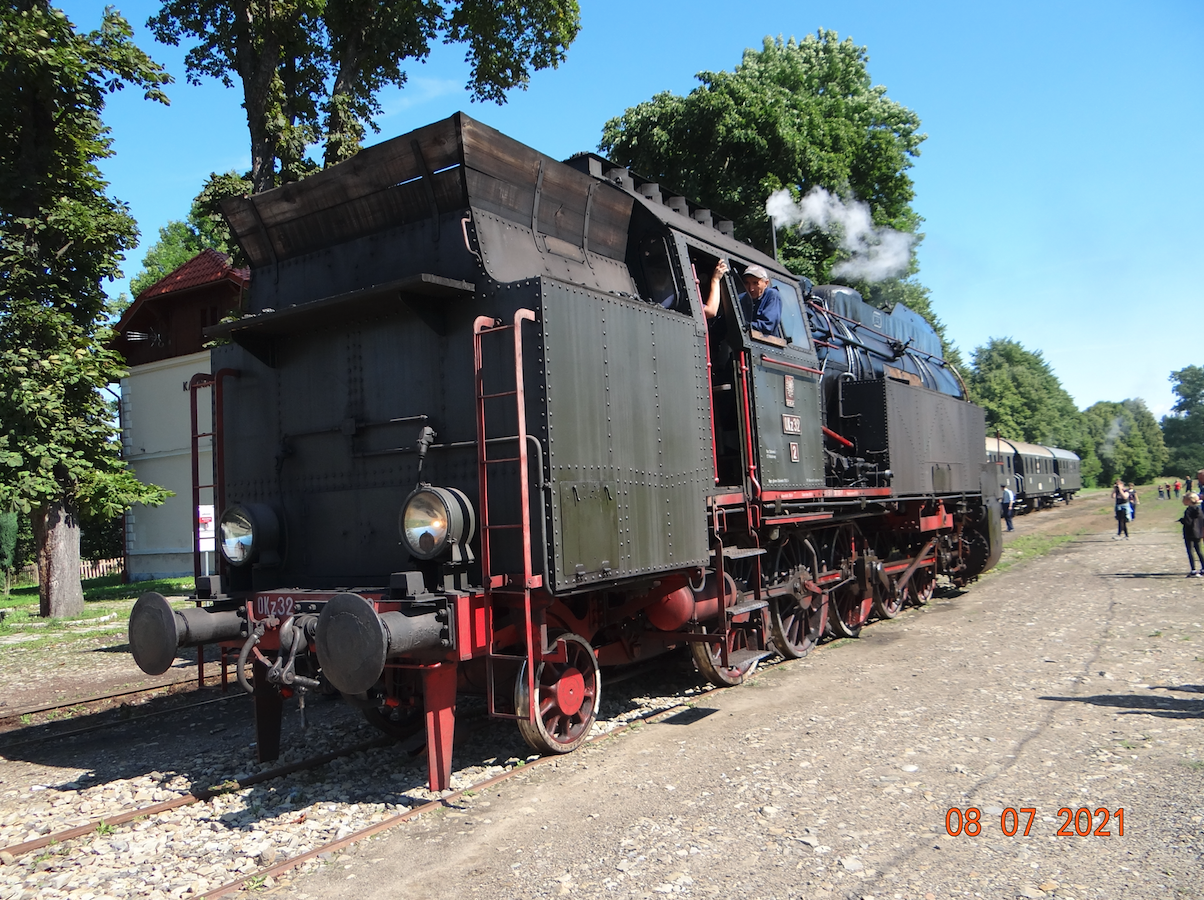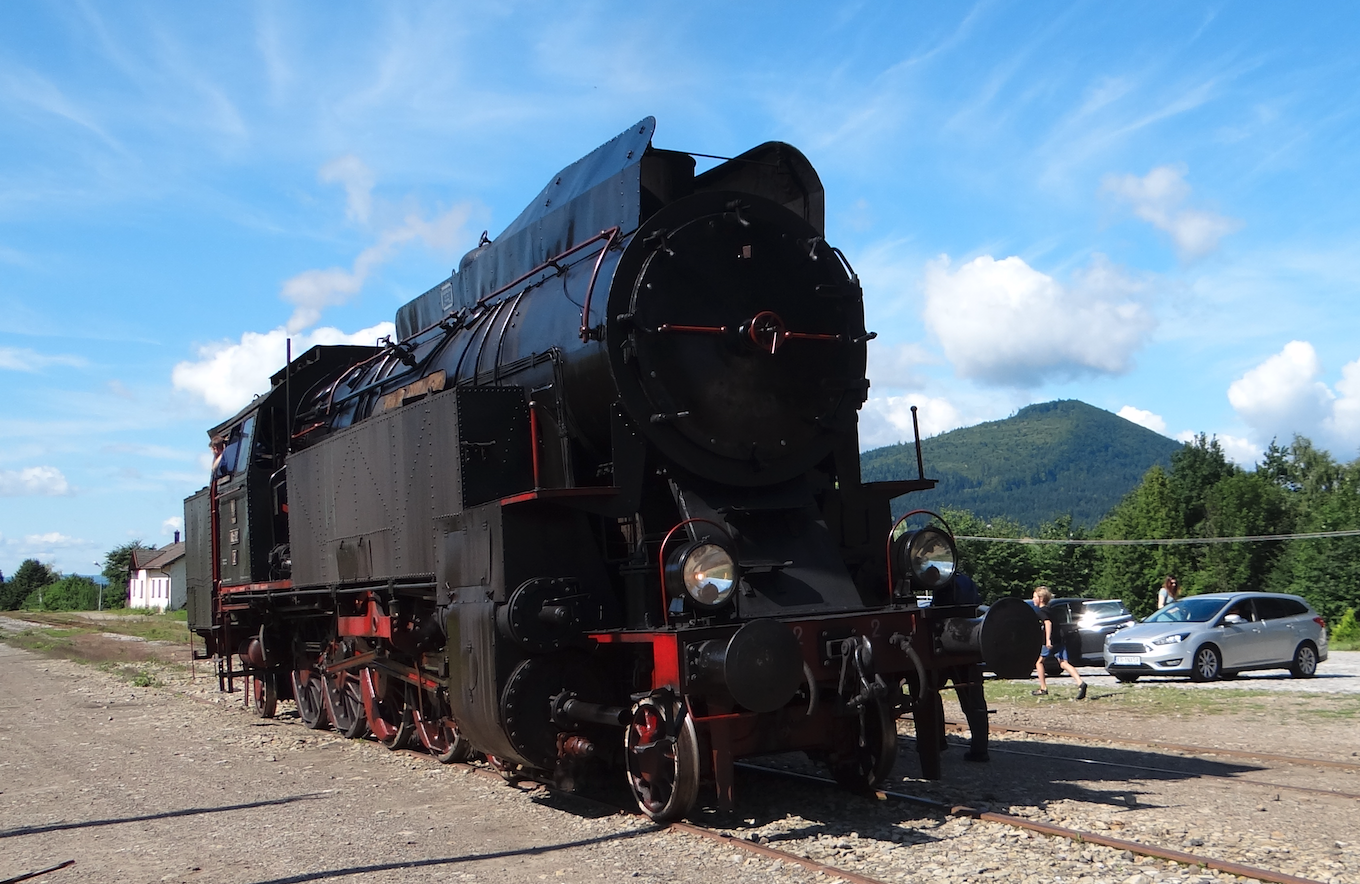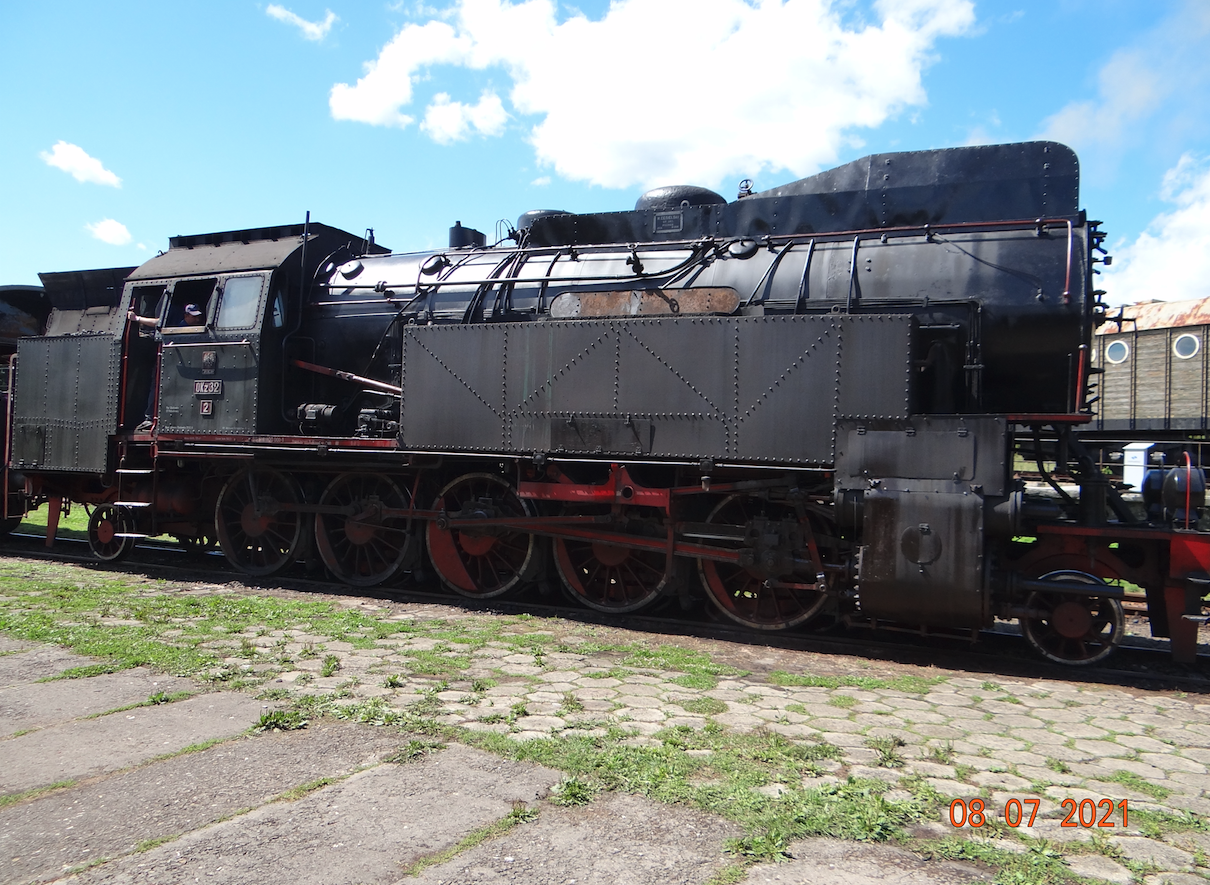Chabówka 2021-12-21
Steam locomotive OKz32-2.
The OKz32 steam locomotive is a Polish locomotive developed by HCP in 1932 as a passenger steam locomotive, of the tender (Kusy) type, with a "z" type running gear, i.e. 1-5-1. The locomotive was intended for mountain routes, especially on the Kraków - Zakopane line.



After Poland regained independence, the Krakow - Zakopane route was more and more popular. It was good to visit the capital of the Polish Tatras. Railway traffic increased. Due to the change of direction in Płaszów, Sucha Beskidzka and Chabówka, the most suitable were steam locomotives of the tendrzak type, which maintained the same running speed both forwards and backwards. The route was served by German-built steam locomotives TKt1 and TKt2, which, however, were poorly able to negotiate bends and damaged the tracks. In addition, they were weak and only pulled trains weighing up to 250 tons.
Therefore, in 1930, the Ministry of Transport ordered from the Hipolit Cegielski Works in Poznań (HCP) a steam locomotive capable of working on mountain routes, pulling trains weighing 400 tons. The project was developed by professor Antoni Xsiężopolski. The first design was to have a 1-5-2 axle arrangement, but analysis showed unequal round trip of the steam locomotive. Therefore, the "z" type layout was adopted, i.e. 1-5-1 (oOOOOOo). The large number of axles resulted from the need to obtain a sufficiently high friction, and not from the weight of the locomotive. In 1932, the Ministry of Communications approved a design that was designated OKz32.
A large boiler with a steam superheater with a pressure of up to 15 atm (at) has been designed for the locomotive. The fire box is made of copper. The boiler has a large tipping grate and a large ash pan with flaps that can be opened from the driver's cabin. There are two blowdown valves in the boiler. Two suction-forcing injectors were used to refill the boiler with water. The mainstay of the locomotive was built of steel beams, 90 mm thick. Krauss - Helmholtz carriages were used on the rolling axles. The rolling axles have a lateral movement of 130 mm to each side. The extreme drive axles received a lateral movement of 25 mm in each direction. The central axis was narrowed by 15 mm.
Westinghouse Composite Air Braking System. H11a3 three-cylinder, two-stage compressor. Electric installation from ERA, powered by electricity from a 24 V turbogenerator. Two sandboxes were placed on the boiler, which were operated with compressed air. The sand was fed under the first four drive wheels. The locomotive received a steam installation for heating passenger carriages.
Many components were adopted from the OKl27 steam locomotive. It was a time when many components of steam locomotives operating in Poland were unified.
The first OKz32-1 steam locomotive was ready in March 1934 and was handed over for testing. The tests were successful. Travel time on the route Krakow - Zakopane with a train weighing 330 tons was shorter by 30 minutes and more. The train consisted of eight four-axle wagons. In the period 1934-1935, 25 OKz32 locomotives were built, all of which were directed to the mountain routes and assigned to Kraków and Nowy Sącz. Steam locomotives from Nowy Sącz ran on the Tarnów - Krynica route.
In 1939, after the invasion of Poland by two regimes, the locomotives will be delivered to the German and Russian railways. The Russians had several copies on a wide track. The next locomotives were stolen by the Russians after the Second World War, as "trophy" ones. Poland regained only a few machines, which, however, were very worn and devastated. In 1952, the Federal Republic of Germany handed over two locomotives: OKz32-9 and OKz32-10, which could not be repaired. In 1955, two steam locomotives OKz32-3 and OKz32-17 were handed over to the GDR. The repaired OKz32 locomotives served only the Kraków - Zakopane route and were assigned to Płaszów or Sucha Beskidzka.
OKz32-2 steam locomotive.
OKz32-2 steam locomotive, formerly OKz32-5 serial number 306, was more lucky. The steam locomotive was built in 1934. After the Second World War, it was regained by the Polish State Railways. Intended for museum purposes, it ended up in Tarnowskie Góry. In 1974, he was removed from the inventory of the Polish State Railways. Then he went to Tarnów, and then to Płaszów. In 1979, he came to Warsaw, but in 1988, due to the problems of the local museum, he was loaned to Sucha Beskidzka. In 1991, it was decided to overhaul it at ZNTK in Piła. The locomotive has been repaired to a working condition and has been operating Retro trains in Chabówka until now (2021). The last repair was made in 2014 in Chabówka. At that time, the locomotive received a historic painting.
T-T data of OKz32-2 steam locomotive:
Axis system 1'E1, or "z", that is 1-5-1 or otherwise (oOOOOOo). 10 m3 of water stored in three tanks. Coal stock of 6 tons. Design speed 75 km / h. Steam pressure up to 15 atm. Grate area 3.8 m2. The heating area is 185.1 m2. Superheater area 66.0 m2. Driving wheels diameter 1.45 m. Running wheels diameter 0.86 m. Service weight 118 tonnes. Total length 15.32 m. Height 4.62 m.
Written by Karol Placha Hetman
